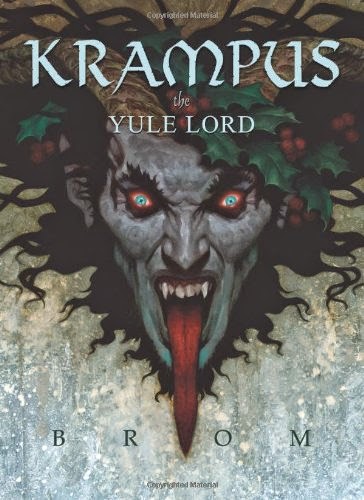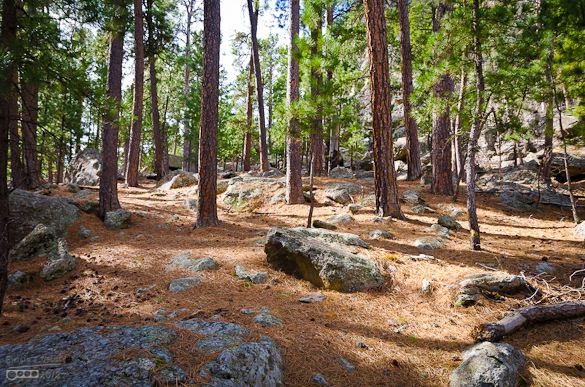Biology concepts – photoprotection, photosynthesis, non-photochemical quenching, reaction center, yule, evergreen, chlorophyll
The zeaxanthin NPQ mechanism (truthfully, it's much more detailed than we have talked about here) is best for quick changes in sunlight level, However, the cycle can be disconnected in winter so that zeaxanthin is maintained for a long time. In addition, a 1995 study showed that some evergreens will prevent damage by inactivated or down-regulating (making less of) proteins of the reaction center, so that the high energy electrons won’t be generated.
Lysenko EA, Klaus AA, Pshybytko NL, & Kusnetsov VV (2014). Cadmium accumulation in chloroplasts and its impact on chloroplastic processes in barley and maize. Photosynthesis research PMID: 25315190
Demmig, B., Winter, K., Kruger, A., & Czygan, F. (1987). Photoinhibition and Zeaxanthin Formation in Intact Leaves : A Possible Role of the Xanthophyll Cycle in the Dissipation of Excess Light Energy PLANT PHYSIOLOGY, 84 (2), 218-224 DOI: 10.1104/pp.84.2.218
Ottander C, Campbell D, Öquist G (1995). Seasonal changes in photosystem II organization and pigment composition in Pinus sylvestris. Planta, 197, 176-183.
The Romans decorated their houses with evergreen boughs in December, and in particular, the Germanic and Norse pagans celebrated the jexla or jol (respectively) festivals in late December until early January. In English, this became Yule, or Yuletide (yule time).
Evergreens, as the name suggests, stay green all winter; they don’t drop the majority of their leaves (needles) and they keep chlorophyll in their leaves all year round. Chlorophyll is green, so there you have it - evergreen.
Chlorophyll is energetically costly to make and maintain, so if there isn’t enough sunlight to make photosynthesis a net gain (once you subtract the energy needed to make and maintain leaves and chlorophyll); a good strategy might be to just drop them and start over again in the spring.
So one reason for being an evergreen would be that there is enough sun and moisture in a certain location to warrant chlorophyll production and maintenance year round. But there might be a more pressing reason for keeping leaves all year round - nutrients.
When deciduous trees lose their leaves, there are letting a lot of nutrients blow away with the wind – usually into my yard. This is costly, especially if you grow in nutrient poor soil like many evergreens do. In cold climates, leaf litter doesn’t decay fast enough to allow nutrients back into the soil, so holding on to your nitrogen is a good idea. Conifer needles tend to be lower in nitrogen than deciduous leaves, so they hold on to their nutrients better.
The result of all this is that evergreens, conifer trees and some bushes, stay green year round. But they’re just fighting to stay alive, not growing year round. It turns out that evergreens spend a lot of energy to avoid sun damage caused by the very mechanisms that allow them to gather sunlight light year round. In winter:chlorophyll + sunlight = death. Just like vampires, they have to protect themselves from the suns rays, or they burn up.
The truth is, evergreen trees in cold climates do very little photosynthesis in the winter, even if there is sunshine. They'll make carbohydrates from sunlight, water, and CO2 (the three ingredients needed for photosynthesis) when they’re each available, but available is a relative term.
Air is always available, so CO2 isn’t problem. The sun is at a lower angle in the winter, but it isn’t cloudy and gray everywinter day; it just seems that way. So sunshine is available at least part of the time - usually daytime.
Even temperatures nearfreezing can slow down water movement in plants, and since cold air holds less water (humidity), more water can be lost from leaves - even the wax covered, thick leaves of conifers. The end result is that photosynthesis is just not feasible during most points of the winter.
Yet the evergreens don’t drop their leaves and keep their chlorophyll in their chloroplasts. That means that every time the sun comes out, some of the energy of the rays are caught and transferred to the photosynthetic reaction centers, including chlorophyll. If photosynthesis can’t be completed because of a lack of available water, then what happens to all that energy? It is free to bounce around and damage plant tissues, usually in the form of reactive oxygen species (ROS, see this post). Enough damage and the plant will lose its ability to function and die.
To avoid the irony and embarrassment of becoming a dead midwinter symbol of life, evolution has provided plants with certain photoprotectivemechanisms. Not just evergreen plants, but all plants. It turns out that photosynthesis pathways are saturable, only so much sunlight can be used to produce energy and then carbohydrates.
The sun is unwilling to play the game; once the saturation limit is reached, it just keeps on shining. On bright summer days, just about any plant is susceptible to damage from excess energy absorption in chloroplasts. Some plants have elaborate mechanisms to change the angle of their leaves so that they receive less sunlight.
According to a 2007 study from Japan, yew cell chloroplasts congregate in the center of the cell volume in response to low temperatures, whereas in summer they can be found along the edges closest to where the light comes in. In this way, many chloroplasts can be shielded from sunlight in the winter, so less energy will be harvested. Pretty smart.
For many evergreen plants, their chlorophyll is doomed to harvest sunlight all winter without being able to use it for photosynthesis, so what can they do with it - other than just let it damage them until they die?
It is important that the plant dissipates the light energy before it reaches the reaction center. Chlorophyll isn’t the molecule that changes sun energy to chemicoelectrical energy. Chlorophyll is the pigment that absorbs the energy. That energy can be transferred to an adjacent chlorophyll molecule and so on until it reaches the reaction center. Here, the accumulated the energy is used to split a water molecule and two electrons move into the electron transport chain. It's the reaction center that actually transduces (changes) the energy from light to chemical form.
2 and turn it into carbohydrate. Those electrons are free to attack any nearby proteins or lipids and break them down. In particular, they can attach themselves to oxygen and create ROS. These molecules are just itching to react with something, anything, and this leads to damage to many structures of the cell.
Plants can try to stop this by producing more antioxidants, which can absorb the electrons from ROS molecules. They might be destroyed in the process, but at least they aren’t allowing the ROS to damage something important. Evergreens ramp up antioxidant molecule production (especially glutathione and alpha-tocopherol) in the winter to prevent ROS damage.
Notice that we said above that the reaction center splits a water to generate the free electrons. Didn’t we also say that in winter, freezing conditions wouldn't allow for available water? This true, but damage to the reaction center and/or chlorophyll is possible BEFORE the point where water would be split. This energy has to be dealt with as well.
To dissipate the energy before it damages the chlorophyll or the reaction center, plants use a technique called non-photochemical quenching(NPQ). Demonstrated in a classic 1987 study, the physical positions of proteins in the photosystem (chlorophylls + reaction center) can be shifted during NPQ so that they create energy traps. In these traps, different pigments, called carotenoids (see this post for plant pigments), can accept the energy of the light.
When the energy hits a carotenoid pigment called violaxanthin, it converts it to another pigment, zeaxanthin. Zeaxanthin can’t passed energy along to the reaction center, but is good at giving it up as heat. When sunlight can be used for photosynthesis, zeaxanthin is turned back to violaxanthin and the photosystem redistributes itself so that light energy can be focused to the reaction center. This is called the xanthophyll cycle.
 |
Cadmium is used in batteries, paint pigments, metal plating and in the production of other metals, like copper and zinc. Long-term exposure can lead to kidney damage, but a new studyshows the problem may be worse than that. The experiments showed that cadmium can interrupt non- photochemical quenching in barley. This can lead to damage and reduced barley harvests. Barley is used in making beer – something must be done! |
This would presumably create more oxygen radicals from the chlorophyll since the energy can’t be transferred to the reaction center, but since zeaxanthin is being kept all winter, that energy is dissipated too. It sounds like a lot of work, but it requires much less energy than dropping leaves in the Fall and then re-growing them in Spring. You wonder why all plants aren’t evergreens – because then we wouldn’t have a special symbol to cram presents during the holidays.
So instead of being a vampire that has to stay out of the sun, the evergreen is more like a superhero that can overcome the power of the sun – his power of photoprotection saves Christmas for us. But maybe not - next week we’ll talk about how many different ways your Christmas evergreens can kill you.




















